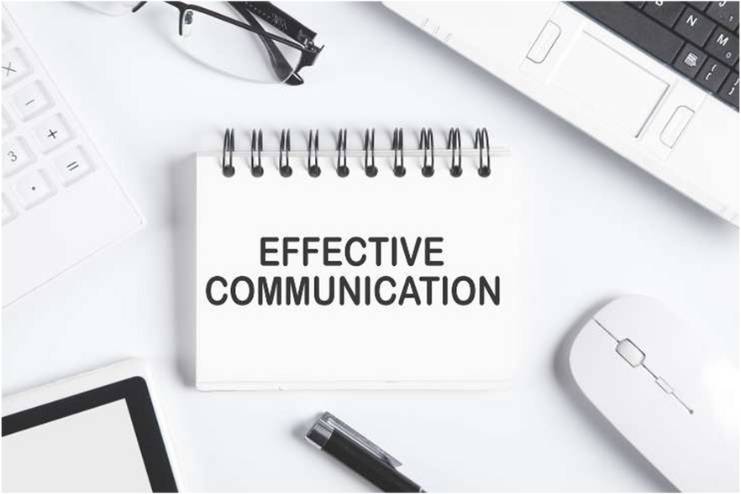Affiliate Disclaimer
Some links in this article are affiliate links. We may earn a small commission if you make a purchase through these links, at no extra cost to you. We only recommend products we find useful to our readersMen’s silence is a common but frequently ignored phenomenon in the complex dance of relationships. Solving the mystery around their reluctance to promote better communication is imperative. Recognizing how often males choose to communicate through silence opens the door to a more thorough examination of the complexities of interpersonal relationships. We will reveal the layers hiding beneath the quiet, eventually shedding light on improving communication and strengthening the ties that bind us.
The Different Faces of Silence

A. Reflective Silence
Some guys use silence as a tool for introspection and reflection; it’s where they go to think things through. Deeply introspective people sometimes choose to be silent to analyze circumstances, process feelings, and acquire perspective. This thoughtful quiet is a purposeful tactic to help traverse the complexity of emotions and ideas rather than the result of avoidance or disengagement. Couples can foster an atmosphere that promotes personal development and a closer bond by acknowledging and appreciating this type of quiet, which gives each person the mental room they need to learn about themselves and their relationship.
B. Stoic Silence
Men can use silence as a stoic reaction, a barrier against the turbulent currents of feelings.. Some men remain silent despite difficulties, setbacks, and disagreements to avoid impulsive reactions and promote emotional stability. Partners aware of this silent resilience will be able to read the nonverbal signs and provide understanding and support when words might not fully express the intensity of feelings. Examining the complex nature of silence reveals the subtle ways people negotiate their inner worlds, strengthening the bonds of communication in interpersonal interactions.
Communication Styles: Men vs. Women

A. Introversion vs. Extroversion
The spectrum of introversion and extroversion is sometimes the source of the differences in communication styles between men and women. Because introverted people need time to process information inwardly before speaking, introverted inclinations may be a factor in the greater frequency of silent moments. Understanding and valuing these quiet times becomes crucial in partnerships.
Quiet introspection can provide comfort to introverted people, who use it as a way to refuel and collect their thoughts. Partners can establish an atmosphere that respects and accommodates different requirements by acknowledging these subtle variances in communication preferences. It will help to build a balance between silent times and verbal expression within the dynamics of the partnership.
B. Verbal Processing Differences
There are frequently disparities between the spoken mental processes of men and women. Men tend to analyze information internally, so they might consider things carefully before speaking. In contrast, people who communicate more expressively are more likely to express their opinions. It is essential to comprehend this gap to prevent misunderstandings. Men could think things through extensively before speaking; they might wait to express their opinions immediately.
Effective communication is facilitated by acknowledging and respecting these different processing patterns. It allows partners to conduct talks patiently and empathetically, ultimately fostering an environment where verbal and nonverbal expressions are respected.
Read More: 6 Habits of Highly Energetic Men – How to Stay Energized All Day
The Silent Treatment vs. Cooling Off

A. The Silent Treatment
Understanding the effect on relationships requires distinguishing between the two types of silence: those used as a genuine need for space and those used as a control mechanism. The purposeful cessation of communication used in silent treatment, frequently motivated by manipulation or punishment, is meant to establish authority or provoke a response. This poisonous environment may hamper open communication and conflict resolution. Acknowledging this differentiation is imperative to develop more positive communication patterns.
B. Cooling Off Periods
However, compelling cooling-off moments entail men adopting quiet as a constructive way to rebalance their emotions, in contrast to the destructive nature of the silent treatment. People experiencing overwhelming emotions may decide to temporarily withdraw into quiet to digest their feelings and collect their thoughts. This reflective stillness is not about dominance; instead, it’s a conscious decision to avoid rash actions when emotions run high.
Couples must recognize and honor these cooling-off times and give each other the room to control their emotions. This strategy fosters a more encouraging atmosphere, values candid communication, and emphasizes the significance of each person’s well-being in a partnership. Couples can improve the quality of their relationship by identifying productive pauses and damaging silences and using empathy to negotiate difficult situations.
Untangling Emotions: Fear, Anger, and Vulnerability

A. Fear and Anxiety
For males who are struggling with anxiety or terror, silence frequently becomes their haven. Some people withdraw into silence as a defensive mechanism in the face of uncertainty or imagined threats. Fear can make one feel vulnerable and cause them to withdraw into silent reflection. It is imperative to identify and address these underlying emotions to create a supportive and understanding environment where people feel comfortable sharing their worries.
B. Unresolved Anger
Men can be silenced by a strong force fueled by unresolved anger. Outraged people sometimes choose to remain silent and think things out instead of letting arguments get out of hand. Breaking the silence and creating a path for better communication and conflict resolution can be facilitated by investigating the causes of this rage and finding helpful strategies to deal with it.
C. Vulnerability and Self-Protection
In the complex dance of relationships, silence can serve as a defense mechanism against vulnerability. Men may use silence as a coping strategy to keep their true feelings hidden out of fear of being rejected or judged. By exploring the intricacies of vulnerability and establishing a secure environment for candid dialogue, these walls that individuals erect on their own can be gradually removed. People can traverse their vulnerabilities together by creating a climate of acceptance, fortifying their bond, and encouraging emotional intimacy. Deciphering the complex emotional tapestry of relationships requires understanding the varied functions of silence in the context of fear, wrath, and vulnerability.
Effective Communication Strategies

A. Creating an Open Space
Establishing an accepting and open environment is the first step in promoting successful communication in a partnership. Fostering an atmosphere where partners can express themselves without worrying about being judged is crucial. It calls for the development of trust, empathy, and attentive listening. People can break down the boundaries that frequently result in silence by appreciating accessible communication and encouraging a healthy flow of ideas and feelings. By laying this groundwork, couples can work together to overcome obstacles and create a strong bond based on understanding.
B. Gentle Inquiry
A tactful questioning strategy might help close the communication gap between unsaid emotions and candid conversation when there is silence. Couples can communicate their concerns in an empathetic manner, as opposed to using force. “I’ve noticed you seem quiet; is there something on your mind?” and similar statements encourage the other person to talk without making them feel compelled. Tactful inquiry highlights the value of comprehension and fosters the environment where people feel comfortable sharing their ideas and feelings.
This method facilitates a deeper connection and strengthens the emotional ties in the partnership by encouraging a cooperative investigation of the reasons for the silence. Couples incorporating these communication techniques can create an environment where silence becomes a chance for development and closeness rather than a roadblock to comprehension.
Supporting Each Other Through Silent Moments

A. Empathy and Understanding
Understanding and sensitivity are the cornerstones of successfully navigating a partner’s quiet times. It’s important to understand that silence can be a nuanced response to many emotions rather than leaping to conclusions. Being empathetic enables one to put oneself in one’s partner’s position and accept one’s feelings without passing judgment. Couples can establish a secure environment where one another can express themselves at their speed and strengthen the ties that keep a healthy relationship going by cultivating an atmosphere of understanding.
B. Offering Support
Supporting someone during quiet times requires balancing being there and putting too much pressure on them. Providing a supportive environment where your spouse feels at ease sharing when they’re ready, refraining from pressuring them for answers right away and showing concern are all helpful strategies. Providing an ear without passing judgment or offering counsel might be comforting, reaffirming that being silent does not mean being alone. Furthermore, nonverbal cues like a consoling touch or being close by might express solidarity. Couples can deepen their bond by creating an environment in which conversation flows freely, turning quiet times into chances for understanding and support from one another. By doing this, couples strengthen their bond and show that they can handle the intricacies of both spoken and unsaid feelings.
Navigating Silence in Healthy Relationships

A. Building Trust
In sound relationships, trust is essential for handling quiet times with grace. When there is trust between partners, there is comfort in expressing one another honestly, even when quiet. Building trust requires honest communication, openness, and a sincere desire to comprehend one another’s needs. When silence occurs, trust enables partners to see it as a usual ebb and flow in the relationship rather than a rupture of communication. Couples that put trust first create a solid basis for enduring quiet times, turning them into chances for personal development and increased intimacy.
B. Seeking Professional Guidance
While periods of quiet are standard in partnerships, prolonged and harmful silence can indicate underlying problems that need to be addressed by a professional. Consulting with a therapist or relationship counselor can offer a safe environment for both spouses to voice their worries and anxieties. A professional intervention can help resolve underlying difficulties and promote healthy discussion by providing tools and ways to manage communication challenges.
Selecting to obtain assistance together shows a proactive attitude toward breaking down communication obstacles and reveals a shared commitment to the relationship’s health. By doing this, couples can become more robust, handle quite positively, and strengthen their bond’s resiliency.
Conclusion
Developing a closer relationship bond involves peeling back the layers of a man’s quiet moments. It is essential to comprehend the complex qualities of silence, whether protective, stoic, or reflective, to strengthen relationships and foster empathy. The two most important lessons are the value of trust-building as the cornerstone of a stronger relationship and the necessity of open communication to remedy misunderstandings.
Couples can turn quiet times into learning opportunities by recognizing and appreciating how people travel their inner landscapes. Adhering to these values establishes the foundation for a relationship marked by comprehension, encouragement, and long-lasting closeness.
References
- https://www.enotalone.com/article/relationships/what-does-silence-do-to-a-man-r11047
- https://medium.com/@matthew.coast/when-a-man-ignores-you-heres-what-he-s-thinking-66e239505743
- https://www.marriage.com/advice/relationship/does-silence-make-a-man-miss-you
- https://www.stoicsimple.com/stoic-silence-the-power-of-stillness-quiet-in-stoicism
- https://www.gordontraining.com/free-workplace-articles/silence-speaks-volumes
- https://vocal.media/bookclub/the-power-of-silence-managing-anger-through-the-art-of-stillness-5pg5c0a5o
- https://www.webmd.com/balance/introvert-personality-overview
- https://www.themuse.com/advice/the-scientific-answer-that-explains-why-introverts-need-and-cherish-their-space
- https://medium.com/introverts-in-the-workplace/why-are-you-so-quiet-understanding-the-emotional-toll-50ea3888768e
- https://coachapproachministries.org/thinking-styles
- https://knotcounseling.com/are-you-an-internal-or-external-processor
- https://www.choosingtherapy.com/silent-treatment
- https://www.canr.msu.edu/news/silence_a_skill_and_a_tool
- https://www.verywellmind.com/married-couples-silent-treatment-2303421
- https://www.healthline.com/health/how-to-control-your-emotions
- https://goodmenproject.com/featured-content/understanding-the-silence-why-men-withdraw-in-relationships
- https://psychcentral.com/health/dont-let-fear-destroy-your-relationship
- https://eggshelltherapy.com/repressed-anger
- https://alixneedham.com/difficult-emotions/the-two-faces-of-unresolved-anger
- https://www.andreaharrn.co.uk/silent-treatment-passive-aggressive
- https://www.joinonelove.org/learn/how-to-deal-with-the-silent-treatment
- https://www.betterhealth.vic.gov.au/health/healthyliving/relationships-and-communication
- https://www.talentedladiesclub.com/articles/why-open-communication-is-important-in-a-relationship-and-how-to-achieve-it
- https://medium.com/the-ascent/how-to-be-assertive-when-you-hate-confrontation-784d5f387711
- https://www.scienceofpeople.com/vow-of-silence
- https://medium.com/@matthew.coast/what-hes-really-thinking-when-he-goes-quiet-6de83c76d917
- https://medium.com/unapologetically-real/silence-can-be-the-sign-of-a-strong-relationship-ca0fbfb7c2d3
- https://www.beyondintractability.org/essay/safe_spaces%20
- https://hbr.org/2019/04/make-your-meetings-a-safe-space-for-honest-conversation
- https://www.choosingtherapy.com/build-trust-relationship
- https://positivepsychology.com/resistance-to-change
- https://www.verywellmind.com/married-couples-silent-treatment-2303421
- https://www.joinonelove.org/learn/how-to-deal-with-the-silent-treatment
In this Article




















